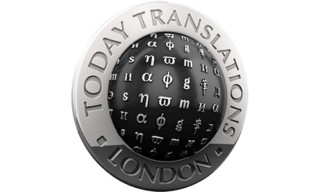We live and work in a multi-cultural society. Advances in technology, in particular the internet, have opened up the world to us and we can now function both professionally and personally as a member of this online global community.
While this creates many new opportunities to do business and network through forums such as LinkedIn and Facebook, it also creates massive opportunities for fraud and deception. Availability, access and in many instances anonymity are the tools of trade exploited by social engineers and fraudsters.
One thing is clear, the online business revolution has enabled fraudsters to easily create their “legend”. The rise of “serviced instant office solutions” allow individuals to link themselves to prestigious addresses in New York, London or Hong Kong.Taken together with the ease of setting up and legitimising a business – for instance in the UK where this can be done online through an intermediary company who will also build your website and online presence – and you have the ideal climate in which the more unscrupulous elements of society can operate and thrive.
So in business terms how do you tell the wolf from the sheep especially when you are negotiating across cultures and languages?
Verbal and written communication may well provide the opportunity to assess the credibility of those you deal with.
As the scientific examination of human behaviour evolves, one fact that is constant is that our words trip us up. Discourse analysis, statement content analysis or one of the many other similar marketed systems all centre on what and how is disclosed in verbal or written interactions. While these systems are routinely used within law enforcement and can be evidenced to provide useful indicators of openness and honesty, do they work with individuals for whom English is not their first language?
An article in the July 2015 FBI Bulletin focuses on this subject and presents the view that if applied in a forensic manner some value can be gained from non-native speakers verbal and written discourse. The study undertaken did, in the words of the authors, “demonstrate that specific valid categories of linguistic markers differentiate truthful and fabricated statements across people of different ethnic and cultural backgrounds”.
In the study, undertaken in the Bay Area of San Francisco, participants “from different language and ethnic groups” were involved in a mock low-level crime. The participants were instructed to either be open about their role or to be deceptive. They were then subjected to a process that involved three interviews. Before the third interview they were asked to provide a written account in English. These accounts were then examined by investigators trained in statement analysis.
The study revealed many commonalities of “verbal markers of deception” presented across the whole process by non-native English speakers compared to native speakers. In particular, the study showed “no cultural/ethnic differences in the rates by which the statement analysis categories differentiated truth from lies”. However, most significantly is the proposition stated by the authors that the results “suggested a possible cross-cultural similarity in the structure of memory and recall of information”.
What this means in business terms is to promote and record spontaneous conversations, be they verbal or written(emails, messenger etc.), and it may, correctly and professionally analysed, provide you with valuable information which could assist in keeping the wolves in sheep’s clothing away from your door.
About Bob Pointer
Bob is the director of business strategy at the Centre for Investigative Learning (CFiL), a CPD accredited training provider. With over 30 years’ experience as a police detective, surveillance specialist and university lecturer he is at the forefront of specialist crime training and delivers courses to clients across the globe. The learning experiences provided by CFiL are immersive and outcomes driven and accredited by the CPD Standards Office.
Read more
Image courtesy of The New Yorker

